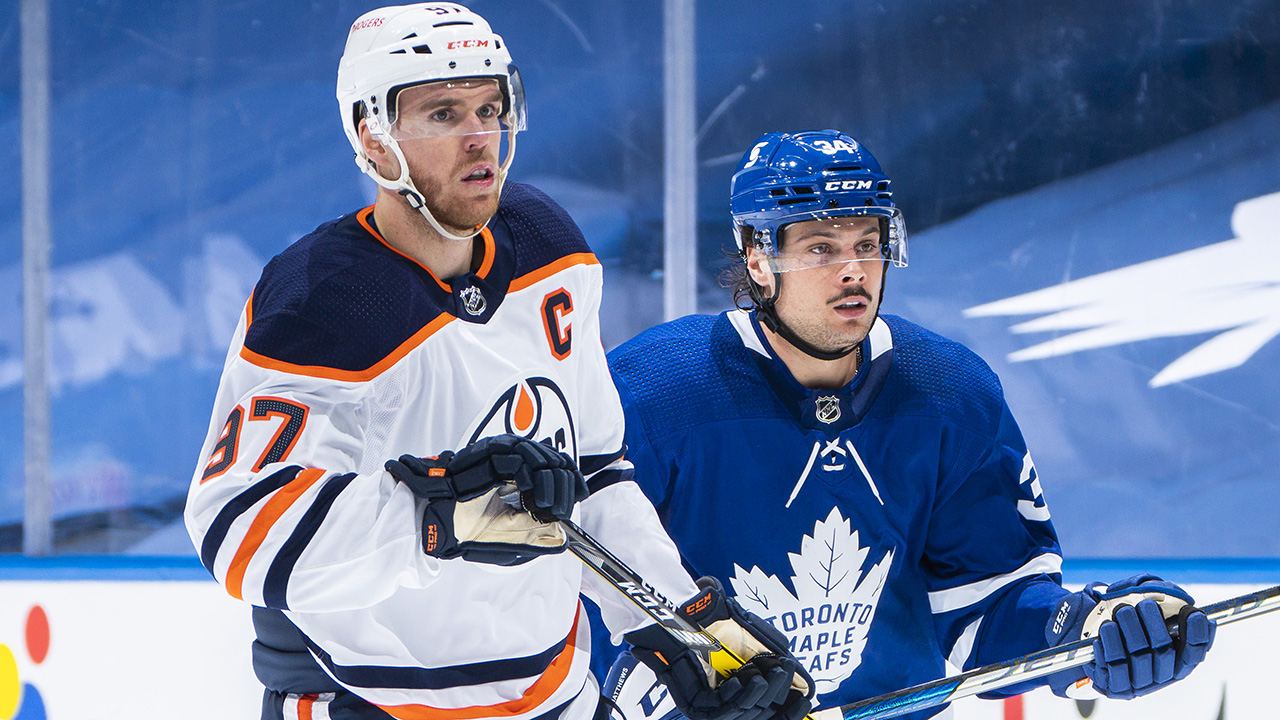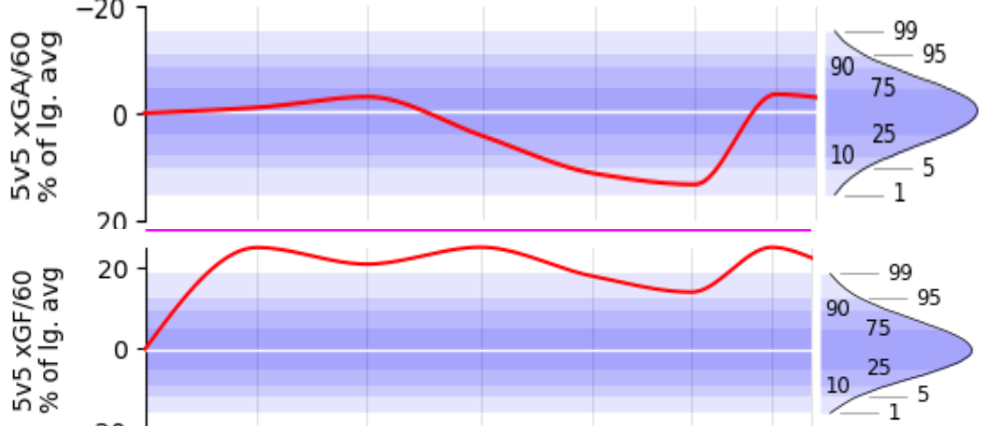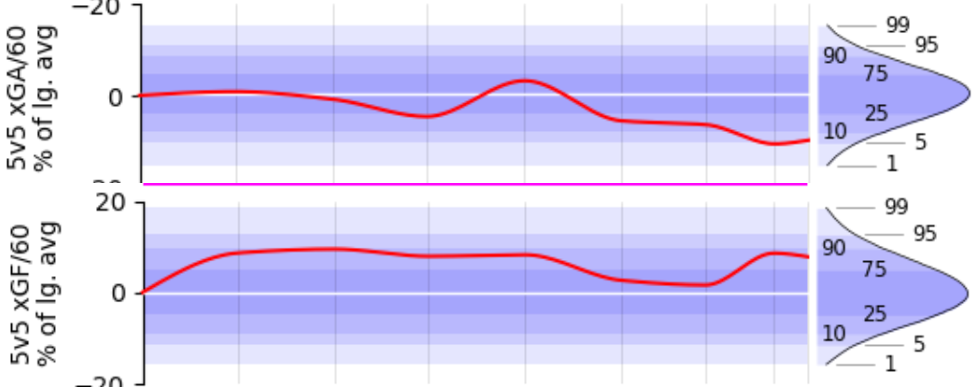
There’s a very specific type of revered forward in the NHL that’s cut from a surprisingly similar cloth. They score a ton in junior and show their talent, make an NHL impression early for the same reason, then they grow and evolve a defensive element that takes them from great talents to great players. I’m talking about Jonathan Toews, Sidney Crosby, Patrice Bergeron, Anze Kopitar, Ryan O’Reilly and Brayden Point. Those guys are all centres, but you can find wingers (Marian Hossa springs to mind) who underwent similar evolutions.
We had Rick Tocchet on Real Kyper and Bourne a couple weeks back after Crosby scored his 500th NHL goal and his quote was that Crosby could have 600 if scoring was his priority. I feel the same about every name on that list – if they just wanted to put up personal numbers, they could absolutely have more. But they prioritized winning, so they worked on rounding out their games to become what they’ve become: Hall-of-Famers, or at least names on the cusp who’ve gotten their names on some Cups.
This evolution shouldn’t be assumed for all young talents in the league. There’s a reason these names stand out as potential Hall of Fame guys – they were willing to do it. League history is rife with players who were given opportunity and accolades for scoring in junior, so they did it in the NHL, where they got opportunity and accolades (and money!), and they just carried on through having great careers…
…While leaving a liiiittle bit of team success on the table. The whole “caring about both ends” thing doesn’t come for everyone.
Great players who don’t have team success are not all on the hook for their teams never winning. Some guys are just unlucky and never get dealt surrounding casts that are good enough. But there’s no doubt some skill players could have done more for their teams were they willing to make the toggle to defending as a priority.
In the not-so-distant past this has been a criticism of some of the best young players in the world who play here in Canada, namely Auston Matthews, Connor McDavid, Leon Draisaitl (and certainly guys like William Nylander, or Kyle Connor, or Mark Scheifele, or Patrik Laine in previous years, all of whom get parenthetical treatment here as they’re in a different class from the three other names mentioned).
The criticism has been “Sure they’re getting points, but their teams haven’t won.” “Yes they can produce, but do they do enough to keep the pucks out given how offence can get harder in the playoffs?”
This criticism of these three stars has gotten quieter as the years have gone on. But despite the resistance of some, there were stretches where the critique had legitimate legs. Two years ago, Draisaitl had a December where he was a plus player in zero (0) hockey games for the Oilers, going minus-24 over 14 games. At some point, it doesn’t matter how much you score if half the time (or worse) you’re digging the puck out of your own net.
McDavid always scored at such an absurd rate that defence mattered less, but things were getting uncomfortable in that department towards the end of Dave Tippett’s tenure. The Oilers were giving up a significant amount the wrong way when he was out there.
It’s only been a small sample, but in the first 10 games after Jay Woodcroft took over, both McDavid and Draisaitl seem to have tightened things up defensively. Whether that’s coming from the coach or the desire to impress him, it’s been real. Through those 10 games Draisaitl has been on the ice for 13 goals for, and only one against. McDavid was on for 14 goals for, and seven against.
It’s looked like this. Watch how often the extra effort has led to the play going back the other way for an offensive opportunity (though maybe not for themselves):

Now don’t get me wrong, these guys still like to go on offence first and foremost, and it’s that fight that may dictate Edmonton’s ability to make meaningful strides or not. In Woodcroft’s 11th game on Thursday night, I still saw moments like this Draisaitl play below, where he’s blowing the zone on a hope that the puck finds its way past the pile and out, and then it doesn’t come particularly close to doing so. (Same goes for Darnell Nurse here – both guys are way too excited to have their dangerous offensive speed built up, so they show zero caution.)
I’d rather see Draisaitl stop on that pile and help a stopped puck find its way out of their end, rather than skating out into the neutral zone. (And of course, Nurse shouldn’t take a forward stride after smashing this rim into a puck battle situation for his winger.)
The conversations around Matthews have changed, and appropriately so. Below is a line chart (thanks to Hockey Viz) that covers his career and shows his contributions to “expected goals against,” starting in 2016-17 and ending where we’re at this season. You can see he’s gone from a below average defensive contributor, to being on the right side of the line despite facing the league’s best players every night. (The numbers on the right are what percentile of the league their performance is, in this category.) He’s been excellent in a challenging role.
Matthews’ contributions to the offensive side of things is um, pretty good too.
Rest assured, the offensive charts for McDavid and Draisaitl look comparable. Here’s McDavid’s expected goals against, then goals for (starting in 2015-16). You can see the uptick this season:
And Draisaitl, who’s still on the wrong side of things despite his better recent eye-test efforts:
So have these guys come far enough to bring to their teams what Crosby and Bergeron and Toews and Kopitar and O’Reilly and Point have done for their respective groups? They sure seem to be getting there. Those great centres we’re talking about here were all below league average in “expected goals against” in their first season save for Point and Bergeron, who they may rename the Selke after. They got better at it, some of which would be physical development, some of which would be mental commitment. (Interestingly enough, as Crosby’s offensive numbers slow, his commitment and results to defence have only gotten better. He’s not human, though.)
In my experience as a player in junior and the minors, I’ve seen what a difference the commitment to defence can make. My junior hockey team was obsessive about it as a priority, and those who wouldn’t buy-in got shipped out. In the interest of self-preservation I bought-in, and remain fascinated by what a help I found it to be…offensively.
Remaining on the defensive side of piles until you’re sure the puck advances zones means that sometimes you don’t get to take advantage of a lucky bounce, where if you were cheating you may have been in alone. But it also helps negate long shifts in the D-zone, where you’re hemmed in and never really get to play. It turns the puck around the other way more often than not, and for me, I found it put me in more advantageous spots. I could better see the players on the rink ahead, rather than being lost in the forest of bodies. And it allowed for a more offensively friendly gap, allowing me to better move laterally on rushes.
I think two of these guys are all the way there now – that being Matthews and McDavid – and Draisaitl is getting better. For all the talk about how teams find ways to win in today’s NHL, just about no team wins a Cup without a player or two who are elite offensively and also come to defend as well as the best forwards in the league. Keeping that side of the puck a priority will go a long way for every team with skilled players trying to win their first Stanley Cup.
For the Oilers and the Leafs, those stars keeping that commitment could be what finally pushes one of them towards a deeper post-season run.
How improved defence from top stars could propel Leafs, Oilers in playoffs
Source: Pinas Ko Mahal






0 Mga Komento